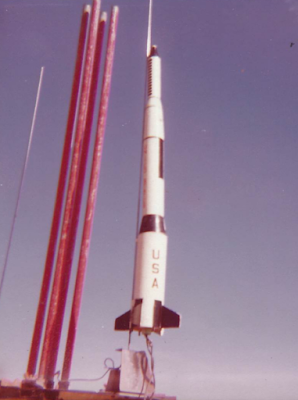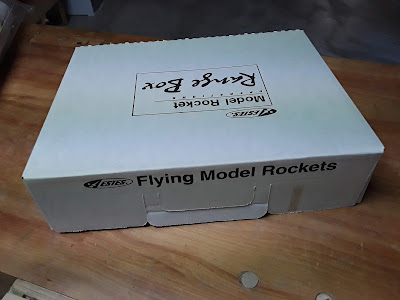Over the past week, Jim Gazur and I have been closely monitoring weather
forecast models for the Front Range of Colorado. The weather has been a bit unsettled lately,
featuring a lot of wind and thunderstorm activity. Memorial Day presented a brief window of
opportunity around the noon hour, when winds would lull to 5 mph, so we decided
to take advantage of the opportunity.
Arriving
at Founders Park in Castle Rock, I set up a wind indicator streamer and found
the best location to set up that would afford optimal downfield recovery. Sustained breezes were hovering at an
estimated 7 mph with brief times of relative calm. The sky was overcast with high cloud cover,
making it difficult to follow smoke trails.
Wouldn’t you know it, as soon as launchers were set up the wind direction
shifted nearly 180 degrees! We moved to
the other end of the field to compensate.
I launched my
old Hornet at this location.


Sure enough, by the time of launch, the wind had shifted again, this time blowing toward the short edge of the field. The Hornet suffered from a non-ejecting parachute, and was blown over the parking lot for a nice hard meeting with the asphalt. Broken fin…
For a second
time, we packed up our gear and moved to the center of the field, resolving to
fly low today.
The next bird
up was my ‘old fleet’ Estes Delta II Astrocam booster on a B4-2 motor. This was a much more successful flight with a
nearby recovery.


By this time Jim had his first model of the day ready to go. This was a down-scaled Enerjet 2250 clone powered by a cluster of three A8-3 motors. Equipped with a Perfectflite Pnut altimeter, the bird reached an altitude of 162 feet with ejection just a couple feet below apogee!

With the prevailing wind, I wasn’t willing to risk flying any of my better models, so I stuck with some small 3FNC birds I had in the box.


Next up was my Generic E2X on a B6-4. Nice high flight with a good recovery on dual crepe streamers.


Jim launched a small two stage bird on an A10-0T and ½A3-4T motor combination. The model flew exceptionally well, and both sections were recovered successfully.
The final flight of the day went to my newly acquired Estes Viking. I had modified it to retain the motor casing, and I stuck a streamer in for recovery. The model flew respectably high on an A8 motor, and recovered nicely. As I had predicted, one of the fiber fins was bent from the landing.


By this time, wind was picking up, the temperature was dropping, and we began getting some rain sprinkles.
Opting not to
push our luck, we ended the session.
Despite the
less than ideal weather, it was definitely nice to get out for a good rocket-flying
fix.










































